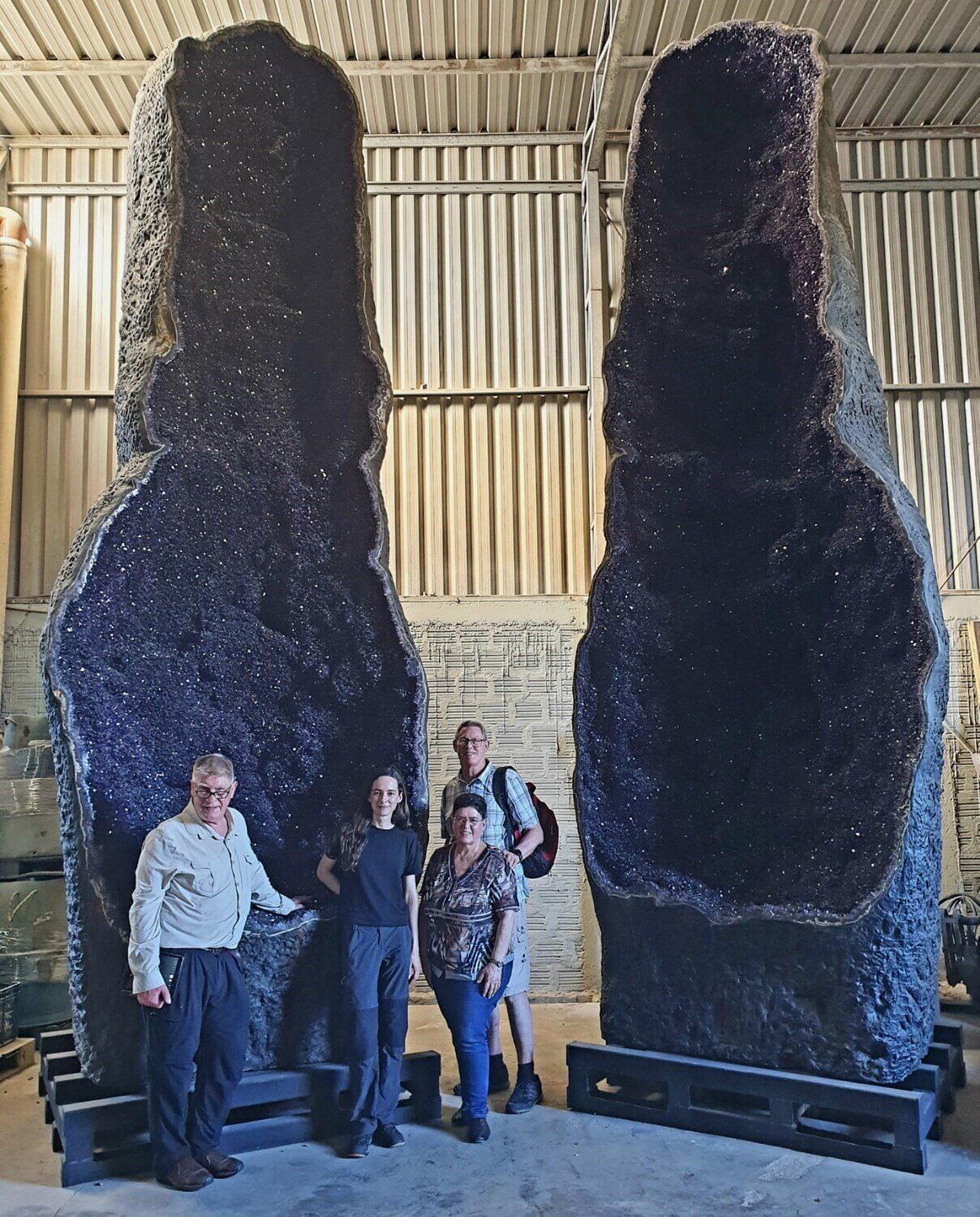An unexpected secret of amethyst geode formation revealed
Follow us on Google News (click on ☆)

Credit: Fiorella Arduin Rode
The amethyst geodes, of rare beauty, form in volcanic rock cavities. How did these purple crystals emerge millions of years ago, following the breakup of the supercontinent Gondwana?
It is in northern Uruguay, a region rich in gemological resources, that these exceptional geodes were discovered. Thanks to research conducted at more than 30 active mines, significant advances have been made regarding their origins.
Using cutting-edge techniques, the Göttingen team discovered that the crystals form at much lower temperatures than previously thought, between 59°F and 140°F (15°C and 60°C). Additionally, the water responsible for their crystallization seems to come from the natural cycle of groundwater.
These geodes are found in basaltic cavities. The combination of slightly saline water and the cooling of the magma allowed the amethyst crystals to form under very specific conditions. The process remains partly mysterious, but the team has proposed a novel model.

Proposed mineralization model.
a - Circulation of groundwater from the deepest part of the Paraná Basin, rising to the host rock through fault reactivation.
b - Mineralizing fluid reaching pre-existing cavities in an episodic alternation between an open and closed system.
c - Detail of b, crystallization of mineral phases.
Fiorella Arduin Rode, a researcher at the University of Göttingen, emphasizes the importance of these findings for understanding the formation of these gemstones and improving future exploration techniques. She stresses the crucial role of local geological conditions in this process.
Recent discoveries will no doubt refine prospecting methods and ensure more sustainable exploitation of these deposits, which are of high scientific and economic value.
What is a geode?
A geode is a hollow rock formation, often spherical or ovoid, that develops inside volcanic or sedimentary rocks. What makes it unique is its interior lined with crystals, such as quartz or amethyst, or other minerals. The exterior, however, is usually rough and unspectacular.
Geodes primarily form when cavities, created by gas bubbles in lava or dissolved fossils, gradually fill with minerals dissolved in water. These minerals slowly crystallize on the internal walls, creating the crystalline formations visible inside.

Researchers from the University of Göttingen in front of a giant amethyst geode in Uruguay.
Geodes like this were discovered in cooled lava flows dating back to the original breakup of the Gondwana supercontinent about 134 million years ago.
From left to right: Dr. Klaus Wemmer, Fiorella Arduin Rode, Dr. Graciela Sosa, Dr. Alfons van den Kerkhof.
Credit: Fiorella Arduin Rode
Amethyst geodes, in particular, contain violet quartz crystals, prized for centuries for their beauty and value. These rare formations are often found in volcanic regions, such as Uruguay or Brazil, where specific geological processes enable their development.